Introduction
What if I told you that most B2B companies are losing up to 20 percent of their marketing budget every single year without even knowing it? It sounds shocking, but it’s true. Disconnected tools, messy data, and unclear reporting quietly drain performance and make it almost impossible to prove what is actually working.
That is exactly where Marketing Ops changes the game. By connecting data, tools, and workflows into one clean system, it eliminates wasted effort and gives teams the clarity to scale with confidence. Without it, demand generation turns into broken attribution and missed revenue opportunities.
With a strong Marketing Ops foundation, marketing stops looking like a cost center and becomes a predictable growth engine. At Revv Growth, we’ve seen firsthand how simplifying the tech stack can unlock this kind of growth, which is why this guide will break down what a Marketing Ops Platform is, why it matters, and how to choose the right one for your business.
What Is a Marketing Ops Platform?
A Marketing Operations Platform (MOP) is the backbone of modern B2B marketing. It unifies people, processes, data, and technology into one system so campaigns run smoothly and results can be tracked with accuracy.
Unlike traditional marketing automation, which focuses only on execution, a MOP provides structure, governance, and strategic insight across the entire marketing stack.
A MOP typically includes:
- A connected ecosystem that syncs CRM, automation, analytics, and ad platforms
- Automated workflows for campaign launches, approvals, lead routing, and reporting
- Shared dashboards that align marketing, sales, and leadership on performance
- Scalable infrastructure that grows with new channels, users, and regions
- Governance that ensures clean data, compliance, and consistent reporting
Who needs a MOP?
- Growing SaaS companies that are moving beyond spreadsheets and ad hoc tools
- Teams with complex tech stacks that struggle with fragmented insights
- Small teams that want automation to replace manual reporting and busywork
- Executives who need predictable dashboards to make confident budget decisions
In short, a MOP turns disconnected marketing into a streamlined, data-driven growth engine.
Best Marketing Ops Platforms for Growing B2B Teams
When you search for the best marketing ops platform, you’re probably not looking for another generic list. You want to know which marketing tools actually solve your challenges, whether that’s cleaning up messy data, running multi-channel campaigns, activating product usage signals, or proving ROI to your leadership team.
That’s why we’ve grouped the leading platforms into five categories.
Quick Compare: Marketing Ops Platforms at a Glance
1. Data Ops Platforms
a. HubSpot Ops Hub (Data Sync & Workflow Automation)
HubSpot Ops Hub helps SaaS teams keep data clean and workflows automated without extra IT support.
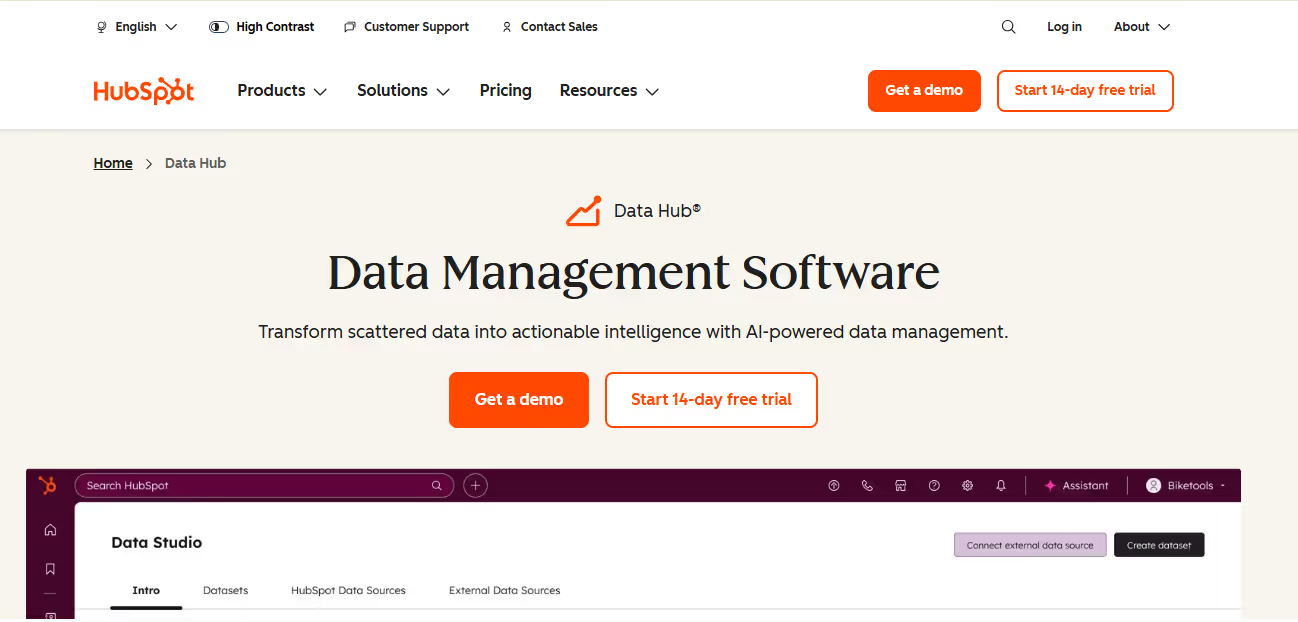
- It offers native two-way data sync across more than 100 applications, making sure CRM and marketing tools are always aligned.
- It provides field mapping and deduplication so teams can trust the accuracy of their reports.
- It enables workflow automation for routing leads, updating records, and generating tasks.
- It supports advanced automation through programmable code when out-of-the-box rules are not enough.
- Because it is part of the HubSpot ecosystem, it keeps sales and marketing in one connected environment.
Best For: Small to mid-market SaaS teams that want fast automation wins and reliable data inside HubSpot.
b. Syncari (Data Governance & Unified Records)
Syncari takes a governance-first approach to data management and helps enforce master data rules across the stack.
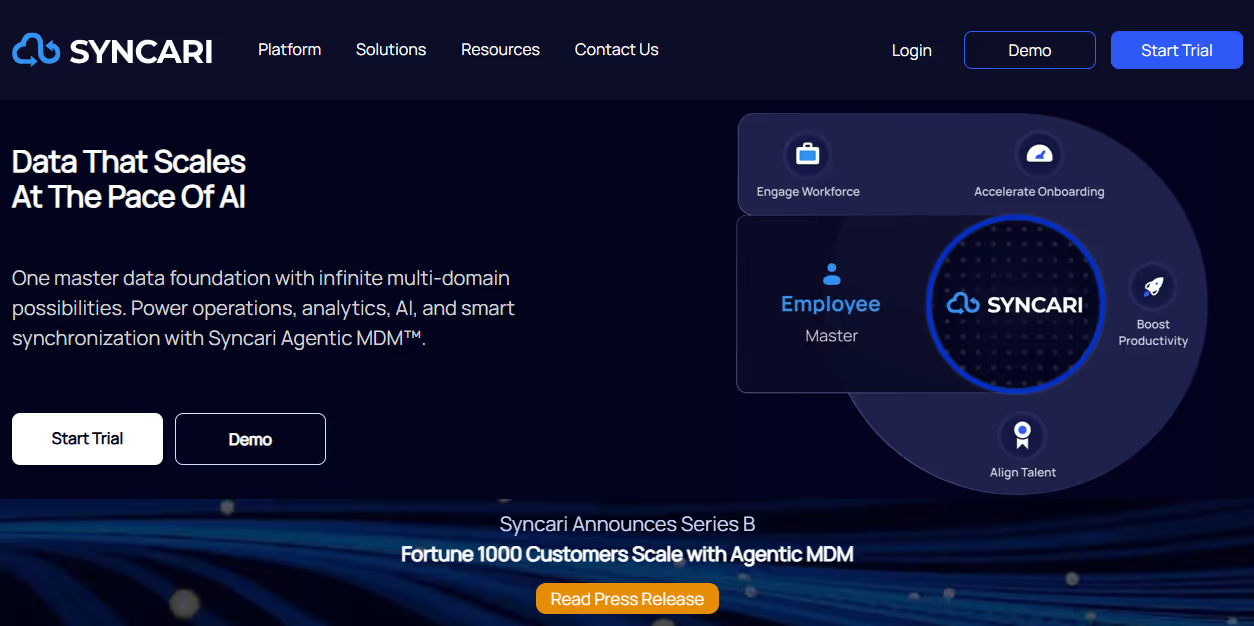
- Syncari lets ops teams create a control layer where rules for master data can be defined and enforced.
- It automatically applies those rules across systems, reducing duplicate and inconsistent records.
- It supports compliance by standardizing data management practices across CRMs and MAPs.
- It makes dashboards more trustworthy by aligning fields and formats across platforms.
- Syncari is built to handle scale, ensuring that adding tools or regions does not introduce data chaos.
Best For: Organizations dealing with dirty data and duplicates that want compliance and governance built into their stack.
2. Campaign Ops Platforms
a. Marketo Engage (Advanced Lead Management & ABM)
Marketo Engage, an Adobe product, is widely recognized by Gartner and G2 as a leader in enterprise marketing automation.

- It allows teams to create advanced lead scoring and routing frameworks that match complex buying journeys.
- It provides account-based marketing orchestration, helping companies run targeted campaigns at both lead and account levels.
- It supports highly customized workflows using tokens, rules, and triggers.
- It integrates with major CRMs and offers flexibility across the martech stack.
- Its dashboards show how campaigns impact the pipeline, helping prove ROI.
Best For: Large B2B companies running advanced nurture and ABM programs that require precision and scalability.
b. Salesforce Marketing Cloud (Enterprise Multi-Channel Orchestration)
Salesforce Marketing Cloud is designed for enterprises that want to orchestrate campaigns across email, SMS, ads, and web personalization.

- It includes Journey Builder, which lets teams create customer journeys that span multiple channels.
- Its Einstein AI features predict lead scores and recommend personalized content.
- It integrates deeply with Salesforce CRM, giving sales and marketing access to one source of truth.
- It offers advanced segmentation and audience targeting to improve campaign precision.
- It supports multi-business-unit and multi-region execution, making it suitable for global organizations.
Best For: Enterprises already using Salesforce CRM that need multi-channel orchestration at scale.
3. Data Activation Platforms
a. Hightouch (Reverse ETL & Real-Time Campaign Activation)
Hightouch is a leader in reverse ETL and helps marketing teams activate warehouse data in real time.
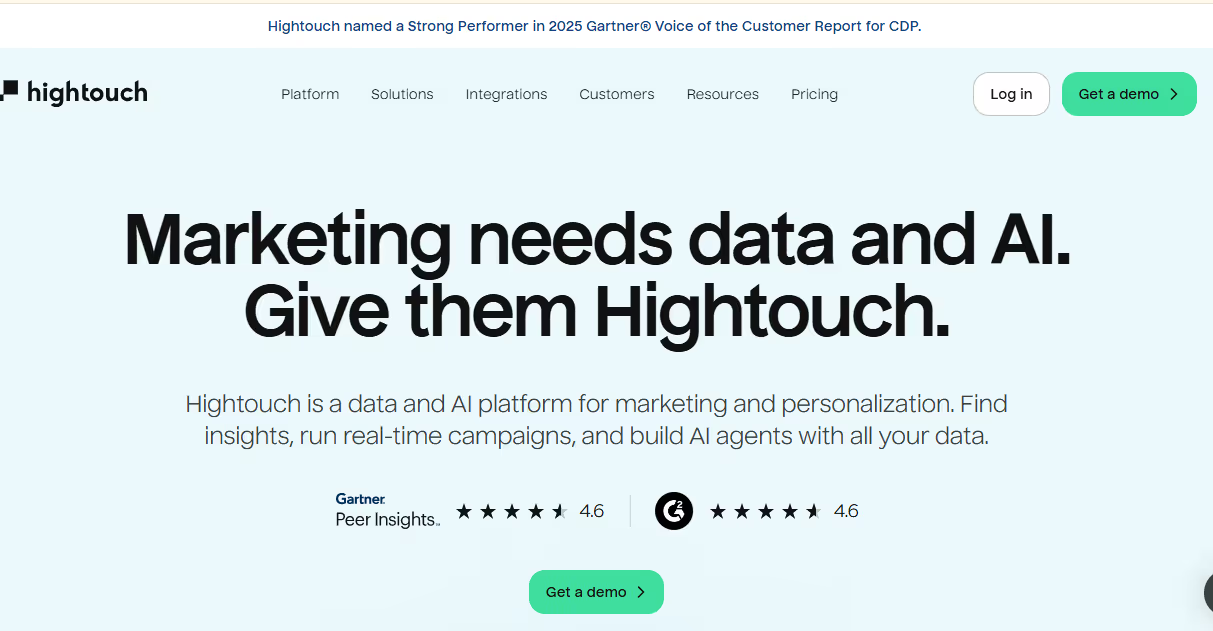
- It connects data warehouses like Snowflake and BigQuery directly to CRMs, MAPs, and ad platforms.
- It removes the need for manual CSV uploads by syncing customer data automatically.
- It enables product-led growth teams to launch usage-triggered campaigns, such as emails sent when users reach milestones.
- It uses Git-based version control so data and marketing teams can collaborate securely.
- Its real-time activation supports PLG workflows where product usage signals drive demand.
Best For: PLG-focused SaaS companies that want to activate product usage data in campaigns without delays.
b. Census (Governance-First Reverse ETL)
Census is another reverse ETL platform, but it emphasizes governance and reliability over speed.
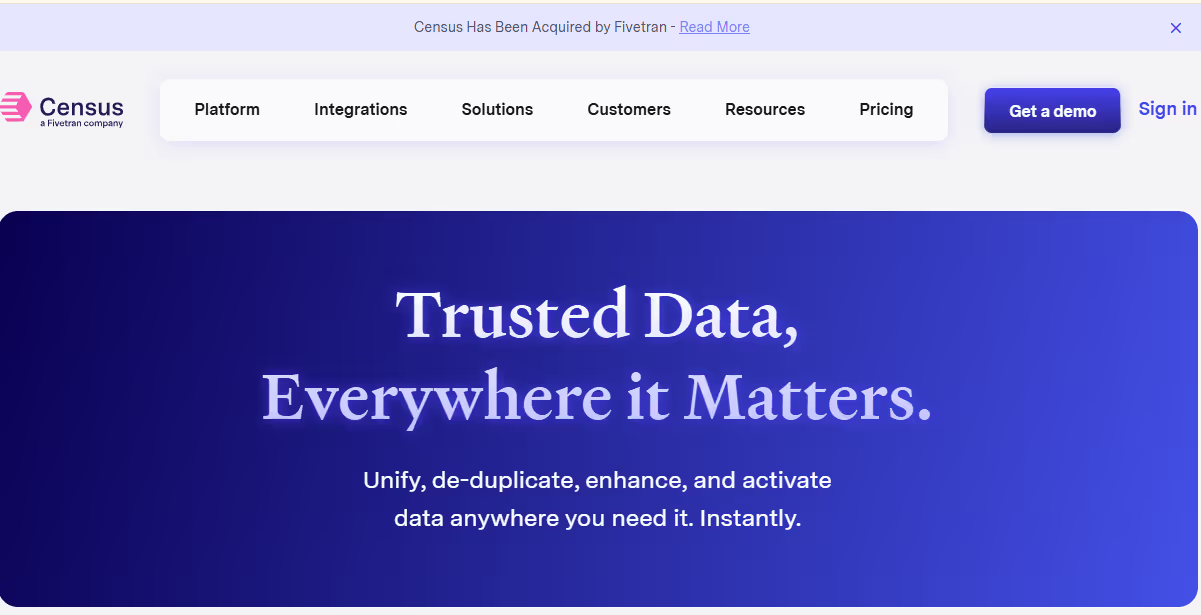
- It syncs data from warehouses to marketing tools while maintaining schema control.
- It ensures that models remain consistent across systems, which reduces reporting errors.
- It integrates natively with Snowflake, BigQuery, and Redshift.
- It allows teams to manage permissions and roles to minimize operational mistakes.
- Its governance-first approach makes it a strong choice for companies that want predictable, reliable data flows.
Best For: Data-driven B2B teams that prioritize governance and accuracy in their marketing ops workflows.
4. Integration & Workflow Ops Platforms
a. Workato (Enterprise iPaaS for RevOps)
Workato is an iPaaS tool that connects apps across the business and automates workflows beyond marketing.
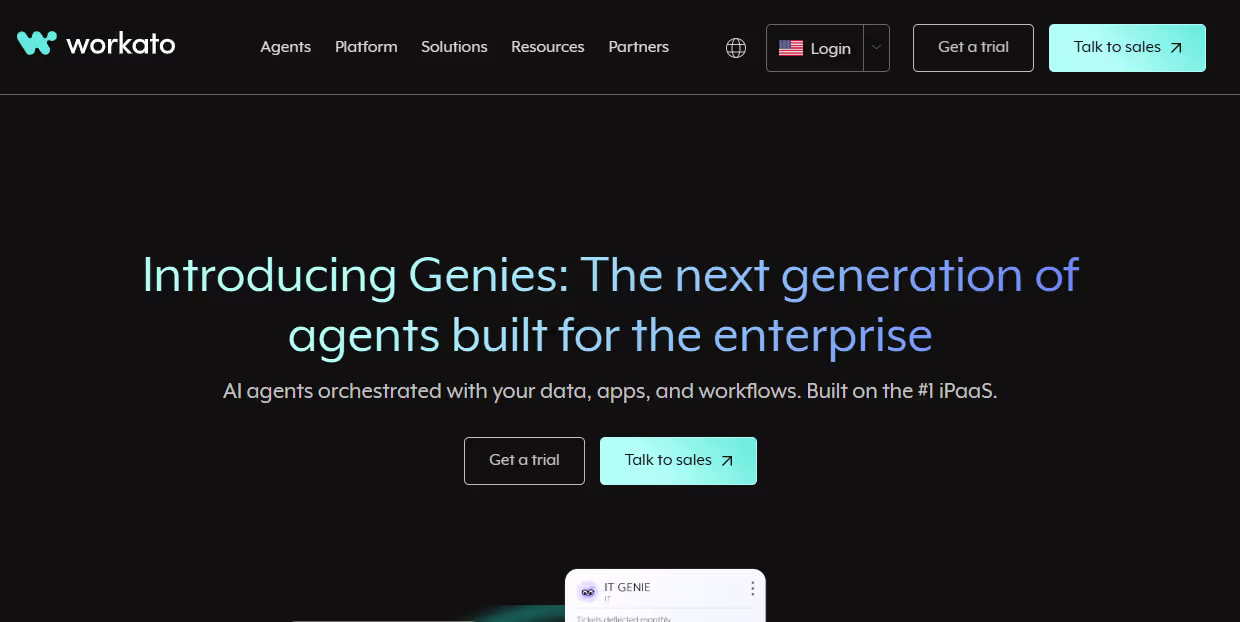
- It helps teams automate processes such as lead routing, opportunity creation, and campaign triggers.
- It connects marketing systems with sales, finance, and success platforms for RevOps alignment.
- It includes reusable automation recipes that accelerate deployment.
- It can handle enterprise workflows across regions, business units, and large data volumes.
- It supports low-code automation, allowing non-technical users to build workflows while giving admins full control.
Best For: Enterprises with complex stacks that want end-to-end automation across all revenue operations.
5. Analytics & Attribution Ops Platforms
a. CaliberMind (Attribution & Revenue Analytics)
CaliberMind helps solve the challenge of proving ROI in long B2B sales cycles.

- It connects marketing, sales, and pipeline data to show true multi-touch attribution.
- It reveals which campaigns and channels contribute to opportunities and closed revenue.
- It provides dashboards that tie marketing activity directly to pipeline metrics.
- It supports lead-based and account-based attribution models, giving teams flexibility.
- It integrates with CRMs, MAPs, and ad platforms, ensuring analytics are centralized and consistent.
Best For: B2B companies that want to prove marketing ROI through advanced attribution and pipeline impact reporting.
Why Businesses Should Invest in a Marketing Ops Platform (With ROI & Scalability Lens)
A business should invest in a Marketing Operations Platform (MOP) because it improves efficiency, reduces waste, and makes growth more predictable.
Gartner research shows that CMOs who use 70 percent or more of their martech stack’s capabilities achieve up to 20 percent higher ROI than their peers. An MOP gives teams one connected system to manage campaigns, track results, and prove ROI with confidence.
Here are the main reasons companies choose a MOP:
Faster Campaign Execution: A MOP automates campaign steps like audience syncs, approvals, and reporting. This saves time and helps teams launch campaigns faster without waiting for manual work.
Clear Revenue Attribution: With a MOP, every marketing activity can be tracked against the pipeline, revenue, and content ROI. This makes it easier to see which channels drive results and to allocate budget wisely.
Lower Operational Costs: By consolidating multiple tools into one system, a MOP reduces license costs and manual labor. Teams can spend less time fixing data issues and more time on strategy.
A Future-Proof, AI-Ready Stack: A MOP keeps data clean and organized so businesses are ready to adopt AI for predictive lead scoring, personalization, and forecasting.
In short, investing in a MOP means faster execution, lower costs, and better visibility into what truly drives growth..
Marketing Ops Platforms vs. Marketing Automation Platforms: What’s the Real Difference?
The difference between a Marketing Automation Platform (MAP) and a Marketing Operations Platform (MOP) is simple: a MAP executes campaigns, while a MOP manages the data, processes, and integrations that make those campaigns efficient, measurable, and scalable.
You’d think the Marketing Automation Platform (MAP) would guide the way, since it has “map” in the name. But in reality, it’s the Marketing Ops Platform (MOP) that actually drives the journey.
Here’s a side-by-side comparison:
How to Choose the Right Marketing Ops Platform
Choosing the right marketing ops platform starts with your team’s size, tech stack, and growth goals. Use this checklist to guide your choice:
- Match features to your team size: small teams should focus on automation and data hygiene, while larger teams need orchestration and scalability.
- Check integration depth to ensure the platform connects smoothly with your CRM, analytics, and other core tools.
- Evaluate reporting and attribution capabilities so you can calculate ROI and prove how marketing contributes to revenue.
- Plan for growth by selecting software that scales easily with more users, campaigns, and regions.
- Focus on alignment with your business stage instead of chasing features, so the tool reduces manual work and supports predictable pipeline growth.
Common Marketing Ops Challenges (and How to Solve Them)
Even the best marketing ops platform cannot deliver results if your team struggles with common pitfalls. Here are the biggest challenges and how to fix them:
- Tool fragmentation: Many teams use a mix of CRMs, automation platforms, analytics tools, and ad systems that do not talk to each other. This creates silos and inconsistent reporting. The solution is to consolidate tools where possible and use a marketing ops platform that centralizes data and integrations.
- Automation overlap: When multiple tools handle the same workflows, duplicate triggers often cause errors such as double emails or misrouted leads. The fix is to audit your current automations, remove redundancies, and manage workflows inside one primary ops platform.
- Inaccurate dashboards: Leaders frequently make decisions based on dashboards that are outdated or based on bad data. To solve this, you need to enforce data hygiene, define metrics consistently, and use attribution tools that connect campaigns directly to revenue.
- Data quality issues: Duplicate leads, incomplete fields, and inconsistent formats slow down campaigns and frustrate sales teams. The solution is to implement clear data governance rules and use a marketing ops platform that enforces data validation across systems.
Conclusion
A Marketing Ops Platform gives your team the structure to run campaigns faster, keep data clean, and prove which efforts actually drive revenue. It removes wasted spend, creates dashboards leaders can trust, and makes scaling easier without adding headcount.
The real value comes from predictability. Instead of guessing what works, you know exactly which channels and campaigns generate pipeline. That makes it easier to plan budgets, focus resources, and grow with confidence.
At Revv Growth, we help SaaS teams design marketing ops systems that deliver results from day one. We simplify your stack so that data, automation, and reporting all work together in one clean system. We also make ROI easier to prove with dashboards and attribution models that show exactly what drives pipeline and revenue.
Not sure where your marketing dollars are slipping away? Let’s figure it out together. Book a free strategy chat, and we’ll map out how to clean up your stack and get more from every campaign.



.svg)

.avif)
.avif)
.webp)